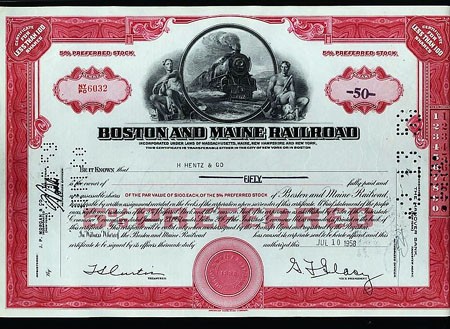What are Preferred Stocks
Post on: 13 Июль, 2015 No Comment

Please refer to our privacy policy for contact information.
Preferred Stocks: The Basics
Preferred stocks are “hybrid” securities that offer some of the features of both stocks and bonds. In this sense, preferreds differ from common stock — the type with which most investors are familiar. The most important difference is that straight preferred stocks are typically less volatile than common stock (meaning there is less potential for capital appreciation, but also less potential for a severe downturn), and they also tend to pay a higher dividend. The option an investor would choose – as well as the decision whether to invest in bonds or other types of securities – ultimately depends on their investment objective and risk tolerance .
Preferred stocks are higher in the “capital structure ” of the issuing company than common stocks, but lower than bonds. This means that in the event that the issuing company went bankrupt, bondholders have the first claim on the underlying assets, followed by preferred investors, and then the holders of common stock. In other words, there’s a higher chance of getting your money back if the issuing company goes out of business. In addition, the issuer must make the dividend payments on preferred shares before it does so on its common stock. Preferreds are therefore seen as being riskier than bonds but less risky than common stock.
Advantages and Disadvantages of Preferred Stocks
Preferred stocks have some advantages, but there are also reasons for caution. The largest positives are that 1) preferred stocks have priority over the common shares in terms of both dividends and liquidation, and 2) that they pay a fixed dividend that is often higher than investors can receive on common stock. On the negative side, preferred shares often have no voting rights – although for individual investors it’s rare that this would prove to be a meaningful drawback. Also, preferred shares typically have less potential for capital appreciation than common stock.
Perhaps the largest disadvantage of preferred stock is the complexity. Investors in individual preferred issues have to choose between variations such as voting vs. non-voting, adjustable rate vs. fixed rate, convertible vs. non-convertible, participating vs. non-participating, and cumulative vs. non-cumulative. If that sounds confusing, you’re not alone – it’s this sort of impenetrability that causes most individual investors to shy away from preferred stocks. See this article for more information on what these various terms mean.
The most important takeaway is that if you’re reading this article, chances are that you’re probably a novice to intermediate investor. If that’s the case, be sure you know exactly what you’re getting into before investing in an individual preferred stock – and very often, that’s no small task.
A Potential Solution: Exchange-Traded Funds
Exchange-traded funds (ETFs) that focus on preferred stocks may be an effective solution for investors. These ETFs provide access to preferreds’ higher yields without the potential risks of investing in individual securities. The largest preferred stock ETF is the iShares S&P Preferred Stock Index Fund (ticker: PFF). As of September 15, 2013, the ETF had total assets of just over $9.8 billion, an expense ratio of 0.47%, and an SEC yield of 5.8%.

One caveat is that the ETF is concentrated in the preferred shares of financial companies, meaning it is exposed to the potential risks in that sector. Also, the fund can be volatile during periods of weakness in the broader equity market. In 2008, for example, its total return was -26.08%. Still, PFF represents a possible way to collect a higher yield and achieve diversification within traditional income-oriented portfolios – as long as you’re aware of the potential risks.
Other ETFs focusing on preferred stocks are: PowerShares Financial Preferred Portfolio Fund (PGF), PowerShares Preferred Portfolio Fund (PGX), SPDR Wells Fargo Preferred Stock ETF (PSK), Market Vectors Preferred Securities ex-Financials ETF (PFXS), S&P International Preferred Stock Index (IPFF), and Global X SuperIncome Preferred ETF (SPFF).
The Bottom Line
Preferred stocks are certainly an interesting option for those seeking to boost their investment income, but the level of complexity precludes an investment in individual preferreds unless you’re a highly sophisticated investor. Fortunately, the preferred-stock ETFs provide investors with the chance to improve their diversification and boost their yields without having to do extensive research on individual securities.
Disclaimer. The information on this site is provided for discussion purposes only, and should not be construed as investment advice. Under no circumstances does this information represent a recommendation to buy or sell securities.














